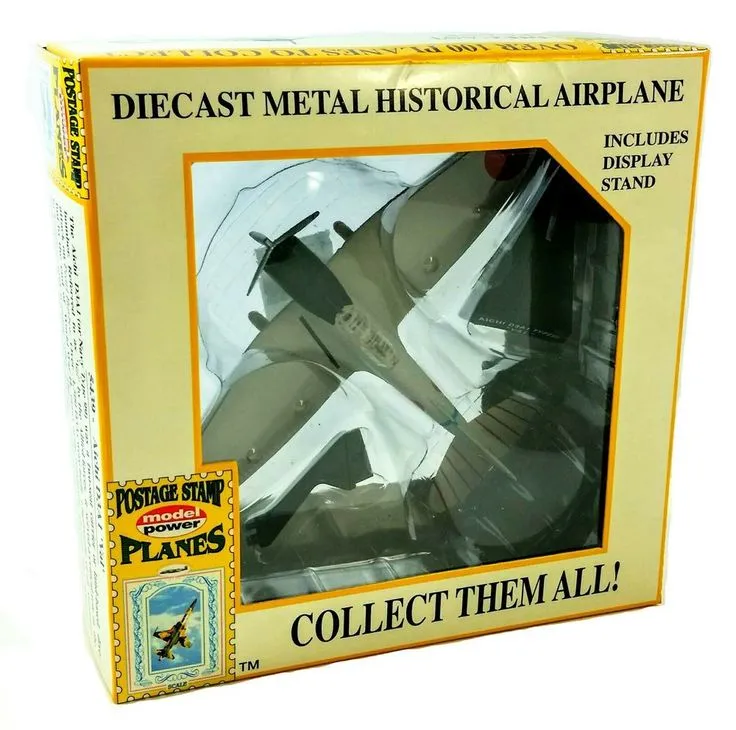What is Postage Stamp Diecast
Postage Stamp diecast cars are miniature replicas of real-life automobiles, meticulously crafted to a specific scale. These models are typically made from diecast metal, a process where molten metal is injected into molds to create highly detailed and durable miniature vehicles. The name “Postage Stamp” often refers to the relatively small size of these models, making them ideal for collecting and display. Unlike larger scale models, Postage Stamp diecast cars are designed to capture intricate details within a compact form factor, appealing to collectors who appreciate precision and craftsmanship. Their small size also makes them easier to store and display, contributing to their widespread popularity within the diecast collecting community. These cars offer a blend of nostalgia, artistic design, and collectibility that attracts enthusiasts of all ages.
The History Behind Postage Stamp Diecast Cars
The history of Postage Stamp diecast cars is closely tied to the broader evolution of diecast model manufacturing. The early days of diecast models saw the emergence of various manufacturers, each vying to capture the essence of real-world vehicles in miniature. The demand for realistic and detailed models gradually increased, which prompted manufacturers to refine their techniques and materials. The transition from simple toy cars to highly detailed collectibles marked a significant shift in the industry, with many collectors now seeking models that replicated every aspect of their full-sized counterparts. The rise of online platforms and specialized communities further fueled this evolution, enabling enthusiasts to share information, trade models, and connect with manufacturers, making the world of Postage Stamp diecast cars both exciting and vast.
The Origins

The origins of Postage Stamp diecast cars can be traced back to the early 20th century when the diecasting process was first used to create metal toys. Initially, these models were simple and functional, designed primarily for children’s play. However, as technology advanced and manufacturing techniques improved, the level of detail and realism in diecast models began to increase dramatically. This evolution set the stage for the emergence of Postage Stamp diecast cars, which would focus on replicating specific vehicle models with extraordinary precision. The development of better molds, finer materials, and more sophisticated painting techniques helped to create a new generation of collectible cars. The shift marked the transition from simple toys to highly detailed, accurately scaled replicas aimed at collectors. This transformation was also influenced by a growing interest in automobiles and a desire to own miniature versions of the cars that captured the spirit of the times.
Early Models and Their Significance
Early models of Postage Stamp diecast cars laid the groundwork for the highly detailed collectibles we see today. These initial offerings, though simpler in their execution, played a pivotal role in establishing the standards of the hobby. They demonstrated the potential of diecast technology to create miniature replicas and set the foundation for the evolution of the models. The significance of these early models lies not only in their historical value but also in their influence on design, scale, and construction techniques. Collectors appreciate the early models for their historical importance and the insights they offer into the development of diecast manufacturing. These models often serve as a snapshot of the design and technology trends of the era. Their significance lies in bridging the past with the present, reminding collectors of the journey and progress made over time in the world of miniature automobiles, and fueling a passion for appreciating the history of the diecast hobby.
Key Features of Postage Stamp Diecast Cars
Scale and Detailing

The scale and detailing are paramount aspects of Postage Stamp diecast cars, setting them apart from toys. These models are typically manufactured in specific scales, like 1:43 or 1:64, ensuring that they accurately represent the proportions of their full-size counterparts. The level of detail achieved in Postage Stamp diecast cars is remarkable, with manufacturers replicating everything from the body lines and interior features to the wheels, tires, and even the smallest emblems. The fine detailing in these miniature cars showcases the craftsmanship involved in their production and reflects the manufacturer’s commitment to precision and realism. Collectors often value the detail of these models. The ability to capture the essence of a real car in a miniature form is a testament to the technology and the passion for creating authentic replicas, further enhancing the collectibility and aesthetic appeal of these miniature vehicles. The scale accuracy allows enthusiasts to build collections that reflect real-world car lineups, making it an enjoyable experience.
Materials and Construction
The materials and construction of Postage Stamp diecast cars are key to their durability and aesthetic appeal. The primary material used is diecast metal, an alloy that provides the necessary weight and solidity to create detailed miniatures. Beyond the metal body, these cars also utilize a variety of other materials such as plastic, rubber, and sometimes even photo-etched parts for intricate details. The construction process involves injecting molten metal into molds to form the car’s body, followed by painting, assembly, and the addition of interior details. The quality of these components significantly influences the overall look and feel of the model. High-quality Postage Stamp diecast cars often feature intricate paint jobs, accurate decals, and realistic detailing, enhancing their collectibility. These materials and construction techniques ensure that these models are both beautiful and durable, capable of withstanding the test of time and the demands of collectors. The careful selection of materials and construction methods is fundamental to the lasting value of these models.
Top 5 Facts to Know About Postage Stamp Diecast
Fact 1 Unique features

One of the most unique features of Postage Stamp diecast cars is the level of detail packed into a compact size. These miniature replicas often include intricate features such as detailed interiors, realistic paint jobs, and finely crafted wheels. The ability to replicate complex designs in a small format is a testament to the skill of the manufacturers. Many models feature opening doors, hoods, and trunks, adding to the immersive experience for collectors. Some models even include engine and chassis details, offering a comprehensive view of the vehicle. These details go beyond the simple appearance. The uniqueness of the features also extends to the different car models available. This attention to detail is a significant draw for collectors, who appreciate the craftsmanship and realism. Collectors can find features such as accurately scaled tires, functional steering mechanisms, and even miniature license plates, all enhancing the value and allure of these miniature vehicles.
Fact 2 Scale and details
The scale and detailing of Postage Stamp diecast cars are critical aspects that define their appeal. These models are typically manufactured to a specific scale, such as 1:43 or 1:64. The precision in scaling ensures that the miniature replica accurately reflects the proportions and features of the real-life car. The detailing includes accurate body lines, interior features, and the addition of wheels, tires, and emblems. The precise detailing shows a commitment to realism that sets these models apart. The scale accuracy of the models allows collectors to represent a range of different car brands, styles, and years in their collections. Detailing often extends to the engine and undercarriage of the models. This level of detail enhances their collectible value and also provides collectors with a more immersive and engaging experience. The combination of accurate scale and detailed features is what makes Postage Stamp diecast cars so attractive to enthusiasts.
Fact 3 The manufacturing
The manufacturing process behind Postage Stamp diecast cars is a fascinating blend of technology and craftsmanship. The process begins with the creation of detailed molds, often made of steel. The molds are designed to capture every detail of the vehicle’s design, ensuring the final product closely resembles the original car. Molten metal, usually a zinc alloy, is then injected into these molds under high pressure. Once the metal cools and solidifies, the car body is removed. The body goes through a series of finishing processes, including the application of paint, decals, and other details. The manufacturing process also includes meticulous assembly work, with workers attaching interior components, windows, and wheels to create a complete and realistic model. This sophisticated process combines advanced techniques with artistic skill. The manufacturing process is what determines the quality and detail, impacting the overall appeal and value of the final product for collectors.
Fact 4 Collectability

The collectability of Postage Stamp diecast cars is a significant factor in their popularity. Collectors are drawn to these models because they offer a unique combination of historical significance, design aesthetics, and investment potential. Limited edition releases and rare models often command premium prices, increasing the value of collections over time. Certain models gain value based on their design, brand association, and historical importance. The collectability of Postage Stamp diecast cars is driven by the passion and dedication of collectors. Collectors often join clubs, attend shows, and participate in online communities to share their passion and knowledge. The collectibility is also influenced by the availability of different models, the condition of the models, and their historical context. The limited production runs and the nostalgia associated with certain models add to their appeal, making them highly sought-after items. The ability to own a piece of automotive history in miniature form is a major draw for collectors.
Fact 5 Value and investment
The value and investment potential of Postage Stamp diecast cars make them a compelling option for collectors. While the value of a model can vary based on several factors such as rarity, condition, and brand, many models have shown an increase in value over time. Limited-edition releases, vintage models, and those in pristine condition are often highly sought-after and can command premium prices. The investment potential of these models stems from their limited availability, the growing interest in collecting, and the historical significance of certain models. Factors that impact the value include the manufacturer, the scale, and the level of detail. Collectors often track the market value of models and invest in those that are likely to appreciate. The investment aspect adds another layer of appeal to the hobby, making it both a source of enjoyment and potential financial gain. Before investing, research the market to understand current trends and the value of specific models.
Why Collect Postage Stamp Diecast Cars
The Allure of Miniature Replicas

The allure of miniature replicas is a core aspect of collecting Postage Stamp diecast cars. These miniature models offer a way for enthusiasts to connect with the vehicles they admire. The detailed craftsmanship and the ability to own a miniature version of a real car is a major draw for collectors. This fascination often stems from a love of automobiles. These models allow them to celebrate the history of automotive design, engineering, and culture. Collecting is a way to share their passion with others, creating a community of like-minded individuals who share a love for these miniature vehicles. The enjoyment comes from appreciating the artistry, the historical value, and the joy of owning a piece of automotive history. The ability to hold and display these miniature cars satisfies a desire for tangible connections to the cars they are passionate about.
Building a Collection
Building a collection of Postage Stamp diecast cars is a rewarding and engaging hobby. Collecting offers collectors the opportunity to curate a personalized assortment. The first step is to choose a collecting theme or focus. Once a theme is selected, collectors can begin researching models, brands, and scales. Building a collection is about personal preference. The process of building a collection involves careful selection, research, and the joy of finding new additions. Collectors often display their models, trading with others, and attending events to enrich their collection. Maintaining a well-organized collection, documenting each model, and preserving the condition of the miniatures are essential aspects of building a long-lasting collection. Over time, the collection becomes a personal reflection. Building a collection is a process that combines knowledge, passion, and dedication, bringing together a community of enthusiasts.
Where to Find and Buy Postage Stamp Diecast Cars
Finding and buying Postage Stamp diecast cars is a straightforward process, thanks to the numerous avenues available to collectors. Local hobby shops and specialty stores often stock a wide selection of models. These stores provide an opportunity to see the models in person and get expert advice. Online marketplaces and auction sites offer a vast selection of models from various sellers worldwide. Dedicated online forums and communities are also excellent resources for finding rare models and connecting with other collectors. Toy fairs and collector shows present a great opportunity to find models and meet other enthusiasts. When purchasing, collectors should consider factors such as condition, authenticity, and price. With research and patience, collectors can build their collections through various channels. The key is to be well-informed and diligent.
